7 Steps to Build an Ecommerce Customer Service Plan

When it comes to running a successful e commerce customer service operation, customer service is the backbone of your business. Did you know that 73% of consumers value customer service experiences more than price or product features? That’s how much it matters! A great customer experience doesn’t just keep your customers happy—it builds loyalty and trust. In fact, companies with excellent customer service can charge up to 16% more for their products.
A well-thought-out customer service strategy can be a game-changer. It helps you connect with your audience, resolve issues faster, and even boost sales. For instance, 68% of customers are more likely to buy from businesses that offer outstanding support. With tools like Sobot, you can create effective e commerce customer service solutions that meet these expectations and set your brand apart.
Understand Your Customers' Needs for Effective Customer Service
Understanding your customers' needs is the foundation of an effective customer service strategy. When you know what your customers want, you can create a seamless customer journey that boosts satisfaction and loyalty. Let’s dive into how you can achieve this.
Identify customer pain points through feedback
Customer feedback is a goldmine for identifying pain points. Whether it’s through surveys, reviews, or direct conversations, listening to your customers helps you uncover what’s working and what’s not. Did you know that 60% of consumers switch brands due to poor customer service? This shows how crucial it is to address their concerns promptly.

One-third of customers expect their problems to be solved in one sitting. By actively gathering feedback, you can pinpoint recurring issues and resolve them faster. Tools like Sobot Live Chat make this process easier by consolidating customer interactions in one place, allowing you to track complaints and identify trends effortlessly.
| Statistic | Impact on Customer Service |
|---|---|
| 60% of consumers switch brands due to poor customer service | Highlights the importance of good customer service for brand loyalty. |
| 75% of consumers prefer human interaction over automated solutions | Indicates the need for understanding customer preferences. |
| One-third of consumers want problems solved in one sitting | Emphasizes the significance of instant problem resolution. |
| 68% of consumers pay more for good customer service | Shows the financial benefits of effective customer service. |
| 95% of consumers believe customer service is crucial for brand loyalty | Reinforces the necessity of understanding customer needs. |
Segment your audience for personalized support
Not all customers are the same, so why treat them that way? Segmenting your audience allows you to offer a personalized approach that resonates with different customer groups. For example:
- Demographic Segmentation: Tailor your support based on age, gender, or income.
- Behavioral Segmentation: Focus on purchase habits to predict future needs.
- Psychographic Segmentation: Align your messaging with customer values and lifestyles.
- Geographic Segmentation: Adapt your service to regional preferences.
By understanding these segments, you can align your customer service goals with their expectations. This personalized approach not only improves customer satisfaction but also strengthens customer loyalty.
Use tools like Sobot Live Chat to gather insights
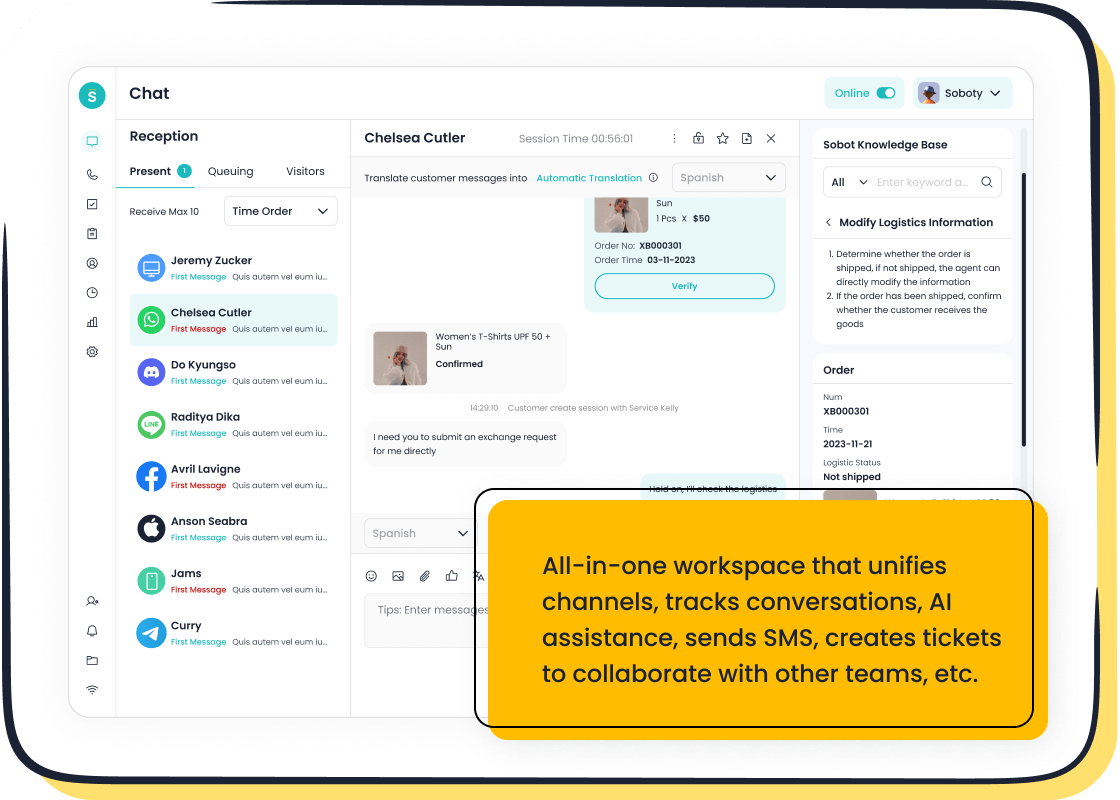
Technology plays a huge role in understanding your customers better. Sobot Live Chat, for instance, offers built-in analytics that evaluates over 150 indicators. These insights help you understand customer behavior, preferences, and pain points. The platform also supports omnichannel engagement, ensuring you never miss a chance to connect with your audience.
With Sobot Live Chat, you can track customer interactions across multiple channels like WhatsApp, Facebook, and Instagram. This unified view enables you to provide a customer-first experience, addressing issues proactively and efficiently. Plus, the AI-powered tools make it easier to analyze data and refine your customer service strategy.
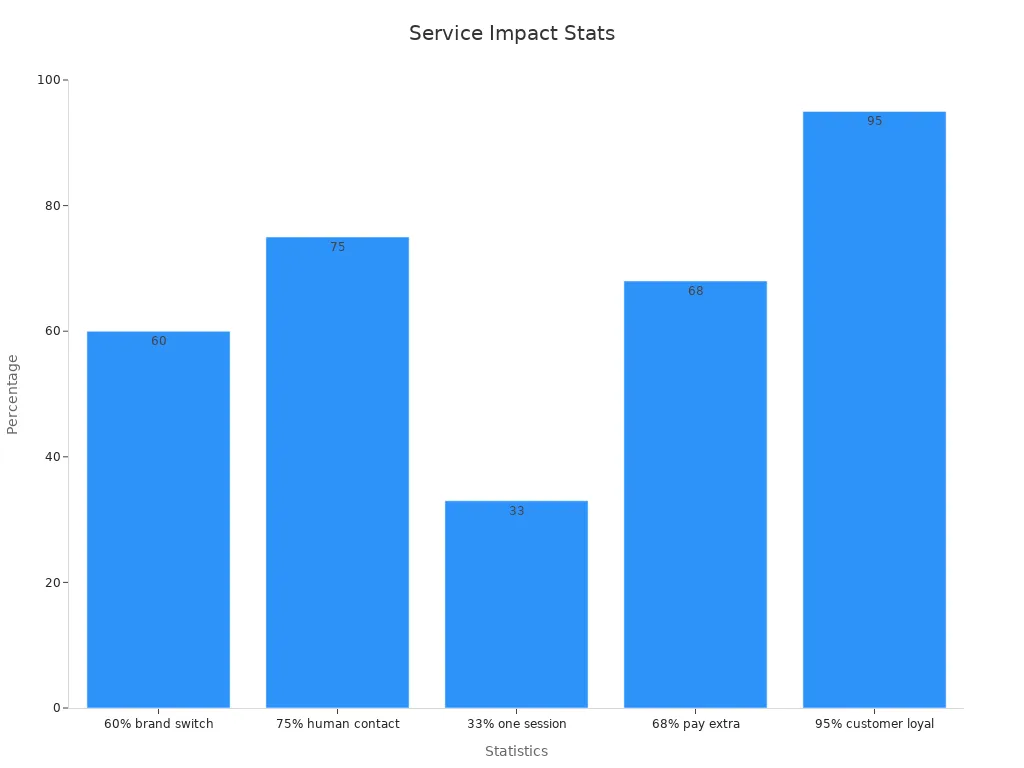
By combining customer feedback, segmentation, and advanced tools, you can create a customer-centric approach that drives engagement and builds lasting relationships.
Define Your Vision and Goals for Ecommerce Customer Service
Creating a clear vision and setting actionable goals for your e commerce customer service is like building a roadmap for success. It ensures your team stays focused on delivering exceptional customer experiences while aligning with your business objectives. Let’s explore how you can define your vision and goals effectively.
Create a customer service mission statement
Your mission statement is the heart of your customer service strategy. It defines what you stand for and what you aim to achieve for your customers. Think of it as your guiding principle. For example, you might say, "We strive to provide each customer with individualized attention and support, ensuring their satisfaction with every interaction."
To craft a strong mission statement, start by understanding your audience. Are your customers tech-savvy millennials who prefer digital communication? Or do they value personalized assistance? Knowing this helps you align your mission with their expectations. Also, consider your core values. If transparency is key, focus on clear communication. If innovation drives your brand, highlight cutting-edge solutions.
A well-defined mission statement not only inspires your team but also reassures your customers that they’re your top priority.
Set measurable goals aligned with business objectives
Goals give your customer service strategy direction. But they need to be measurable to track progress effectively. For instance, you could aim to reduce first response time by 20% or increase your Net Promoter Score (NPS) by 15%.
Here’s a quick look at some key metrics to consider:
| Metric | Description |
|---|---|
| Customer Satisfaction Score (CSAT) | Measures customer satisfaction with a service or product. |
| Net Promoter Score (NPS) | Gauges customer loyalty and likelihood to recommend the service. |
| First Response Time (FRT) | Time taken to respond to a customer inquiry. |
| Resolution Rate | Percentage of customer issues resolved on the first contact. |
Setting these goals ensures your team focuses on what matters most—delivering a seamless customer journey that boosts loyalty and retention.
Incorporate customer satisfaction as a key metric
Customer satisfaction is the cornerstone of any customer-centric approach. Tracking metrics like CSAT helps you evaluate how well your team meets customer expectations. Regularly monitoring these scores can reveal trends and highlight areas for improvement.
For example, simplifying customer interactions often leads to higher satisfaction and loyalty. A high Customer Effort Score (CES) indicates that customers find it easy to interact with your business, which can result in repeat purchases. Retaining satisfied customers is also more cost-effective than acquiring new ones, making customer satisfaction a win-win for your business.
By focusing on these aspects, you can create a customer service strategy that not only meets but exceeds expectations, driving long-term success.
Build a Knowledgeable and Customer-Centric Team
Your customer support team is the face of your business. Building a team that’s both knowledgeable and customer-focused is essential for delivering exceptional service. Let’s explore how you can create a team that drives customer loyalty and satisfaction.
Hire skilled agents with strong communication abilities
Great communication is the backbone of effective customer service. When you hire agents with strong communication skills, you set your team up for success. Skilled communicators can actively listen, empathize, and resolve issues quickly, creating a positive customer experience.
Here’s a quick look at why communication matters:
| Statistic | Percentage |
|---|---|
| Lack of effective collaboration and communication causes workplace failures | 86% |
| Increase in productivity due to effective communication | 25% |
| Employers indicate communication is the most desirable skill | 57% |
| Recruiters prioritize active listening | 36% |
Agents with these skills not only improve productivity but also enhance customer satisfaction. By prioritizing communication during hiring, you can build a team that consistently meets your customer service goals.
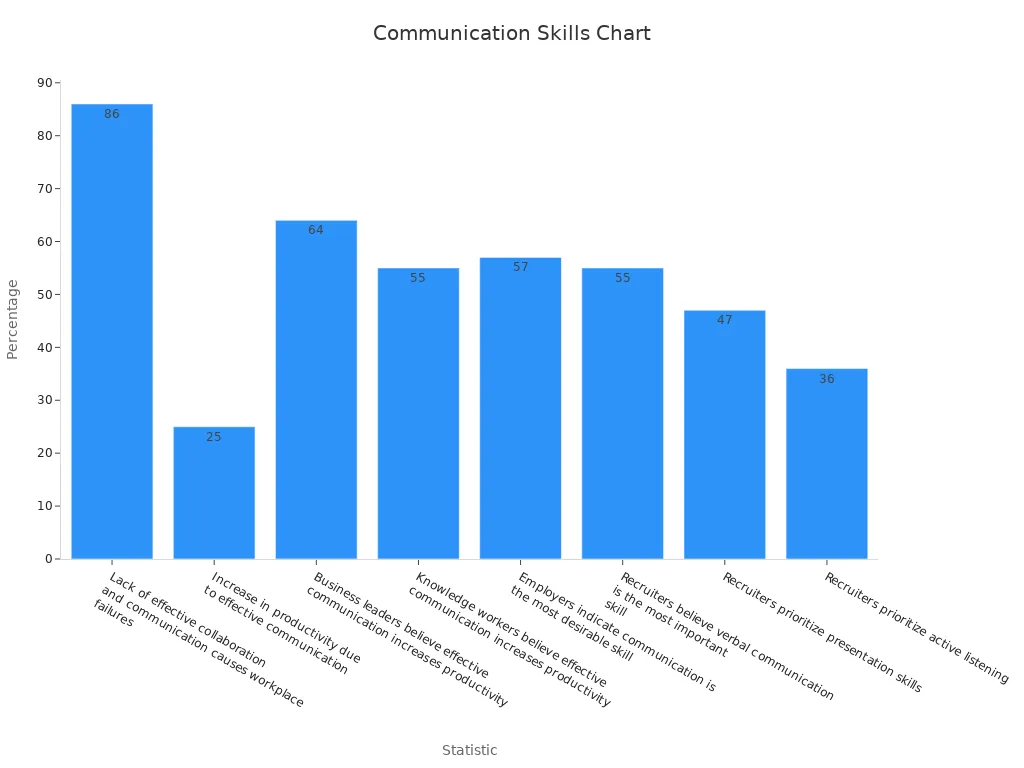
Provide training on tools like Sobot Live Chat

Even the best agents need the right tools to succeed. Training your team on platforms like Sobot Live Chat can significantly improve their efficiency. This tool offers omnichannel support, AI-powered analytics, and a unified workspace, making it easier for agents to manage customer interactions.
Training on Sobot Live Chat has proven benefits:
| Statistic Description | Impact Percentage |
|---|---|
| Reduction in resolution time | Up to 50% |
| First response time improvement | 37% |
| Enhanced resolution speed | Up to 52% |
| Operational cost savings | Up to 68% |
By equipping your team with these skills, you empower them to deliver faster resolutions and better customer experiences. Plus, tools like Sobot Live Chat simplify complex tasks, allowing agents to focus on building meaningful connections with customers.

Empower your team to make customer-focused decisions
Empowering your team to take ownership of their decisions can transform your customer service strategy. When agents feel trusted, they’re more likely to go the extra mile for customers. This empowerment fosters critical thinking and active listening, which are essential for effective customer service.
Here’s how empowerment impacts performance:
- Teams are 2.6 times more likely to provide seamless support across channels.
- 71% of top-performing teams offer 360-degree visibility into customer interactions.
- Empowered teams are 18.3 times more likely to exceed customer satisfaction goals.
Encourage your team to think creatively and prioritize customer needs. For example, allow them to offer personalized solutions or escalate issues proactively. This approach not only improves customer satisfaction but also strengthens your brand’s reputation.
By focusing on hiring, training, and empowerment, you can build a customer support team that delivers exceptional service and drives long-term success.
Leverage Technology to Enhance Your Customer Service Strategy

Technology is a game-changer when it comes to improving your e-commerce customer service. It helps you streamline operations, enhance the customer experience, and achieve your customer service goals. Let’s explore how you can leverage technology effectively.
Use Sobot Live Chat for instant and omnichannel support
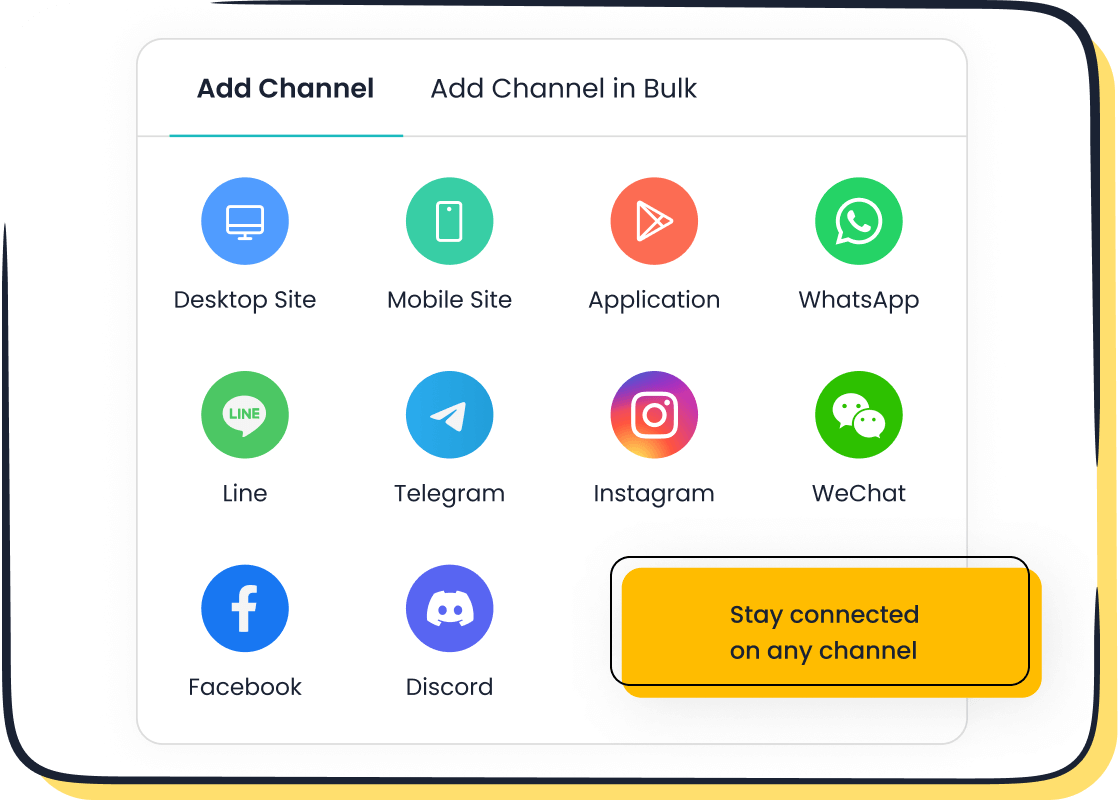
Customers expect quick responses, and Sobot Live Chat delivers just that. This tool provides instant support across multiple channels like WhatsApp, Instagram, and Facebook, ensuring you’re always available where your customers are. With its unified workspace, your team can manage all interactions in one place, making the customer journey seamless.
The numbers speak for themselves:
| Metric | Value |
|---|---|
| Reduction in inbound discussion | 20% |
| Positive feedback rate | 96% + |
| Customer satisfaction rate | 95% |
| Overall problem resolution rate | 85% |
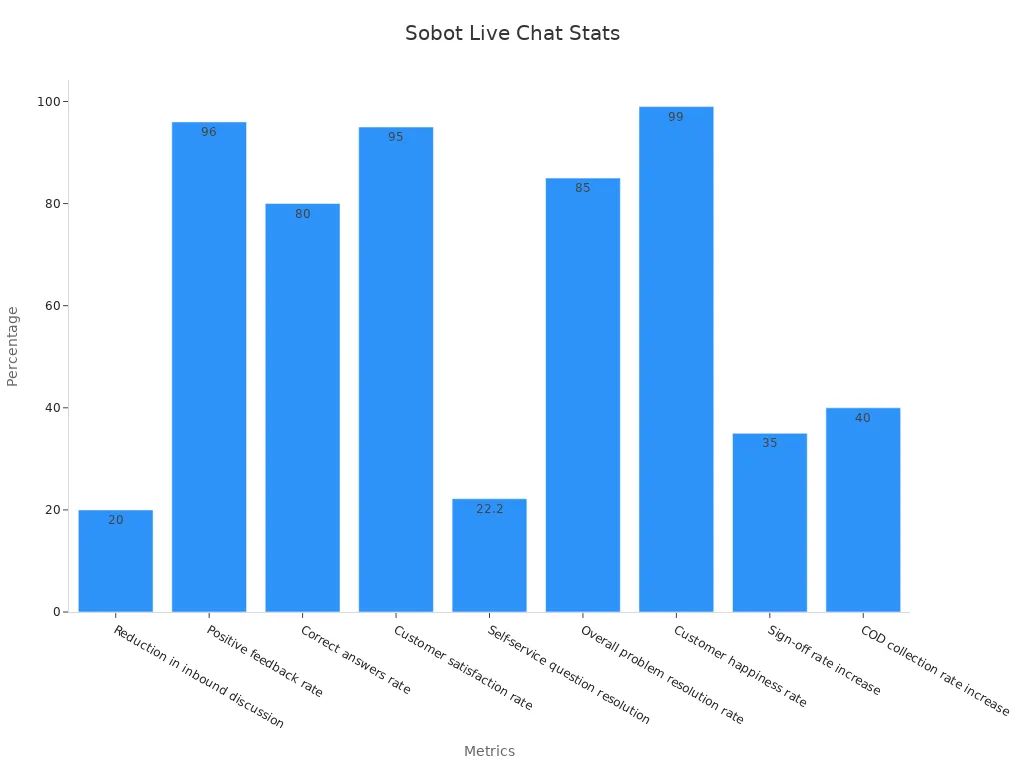
By integrating Sobot Live Chat, you can reduce response times and improve customer happiness. Its AI-powered analytics also help you identify trends, enabling a customer-first approach to engagement.
Automate repetitive tasks with AI-powered tools
Repetitive tasks like answering FAQs or processing simple requests can drain your team’s time. AI-powered tools, such as chatbots, handle these tasks efficiently, freeing up your agents to focus on complex issues. For example, a leading e-commerce company used chatbots to provide personalized recommendations, boosting customer satisfaction and cutting costs.
Here’s how automation benefits your business:
- Cost Savings: Reduces the need for large support teams.
- Proactive Support: Predicts customer needs and resolves issues before they arise.
- Scalability: Handles growing customer interactions without compromising quality.
Sobot’s AI-driven solutions, like its chatbot, offer 24/7 availability and multilingual support. These features ensure your customers always get the help they need, no matter the time or language.
Implement a CRM system for unified customer data
A CRM system is essential for managing customer information effectively. It consolidates data from various touchpoints, giving your team a complete view of each customer. This unified approach allows you to personalize interactions and improve service quality.
Take Delta Airlines as an example. By implementing a CRM system, they saved over $2 million in support costs and handled 16,000 calls more efficiently. Similarly, Netflix used a data-driven CRM strategy to grow its subscriber base to over 167 million while maintaining high retention rates.
With Sobot’s omnichannel solution, you can integrate your CRM with platforms like Salesforce or Shopify. This integration ensures seamless data flow, helping you deliver faster and more personalized service.
By adopting these technologies, you can transform your customer service strategy, making it more efficient and customer-focused.
Personalize the Customer Experience with Data and Insights
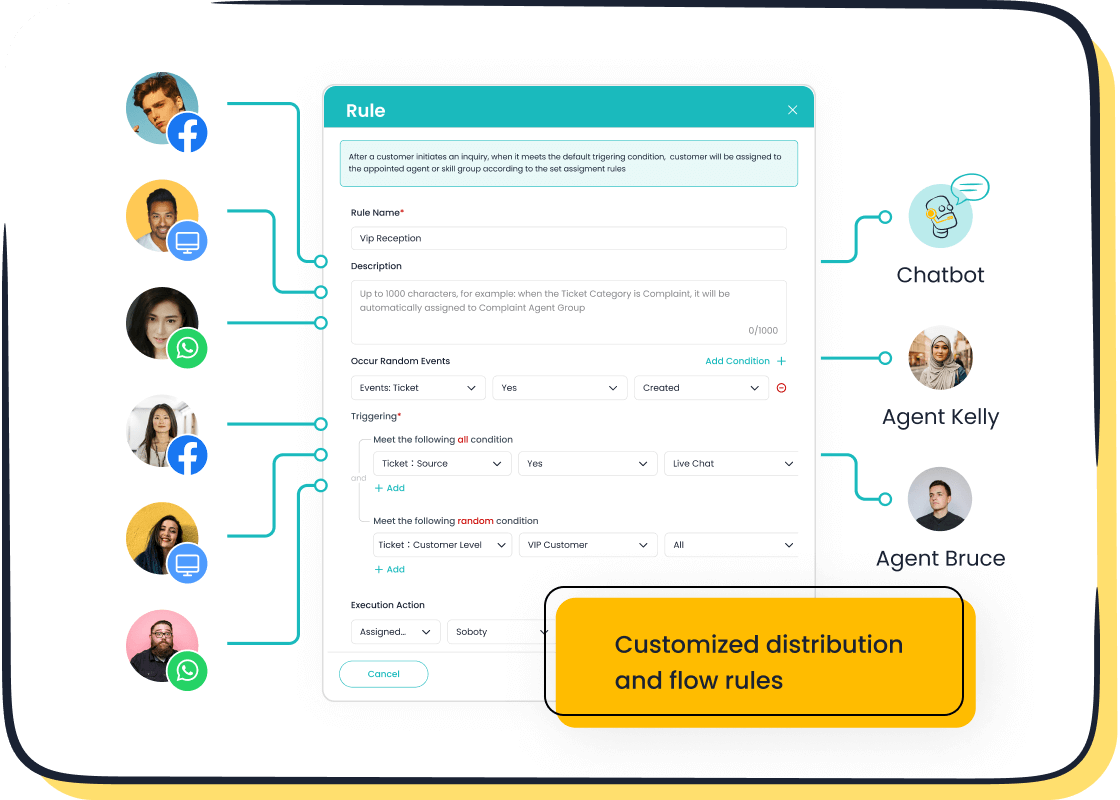
Personalization is no longer optional in today’s e-commerce landscape. Customers expect businesses to understand their needs and deliver tailored experiences. By leveraging data and insights, you can create a customer-first approach that enhances satisfaction and builds loyalty.
Use customer data to tailor interactions
Customer data is a goldmine for creating meaningful interactions. By analyzing purchase history, preferences, and demographics, you can predict what your customers need before they even ask. For example, if a customer frequently buys skincare products, you can recommend complementary items like moisturizers or serums. This personalized approach not only boosts engagement but also drives sales.
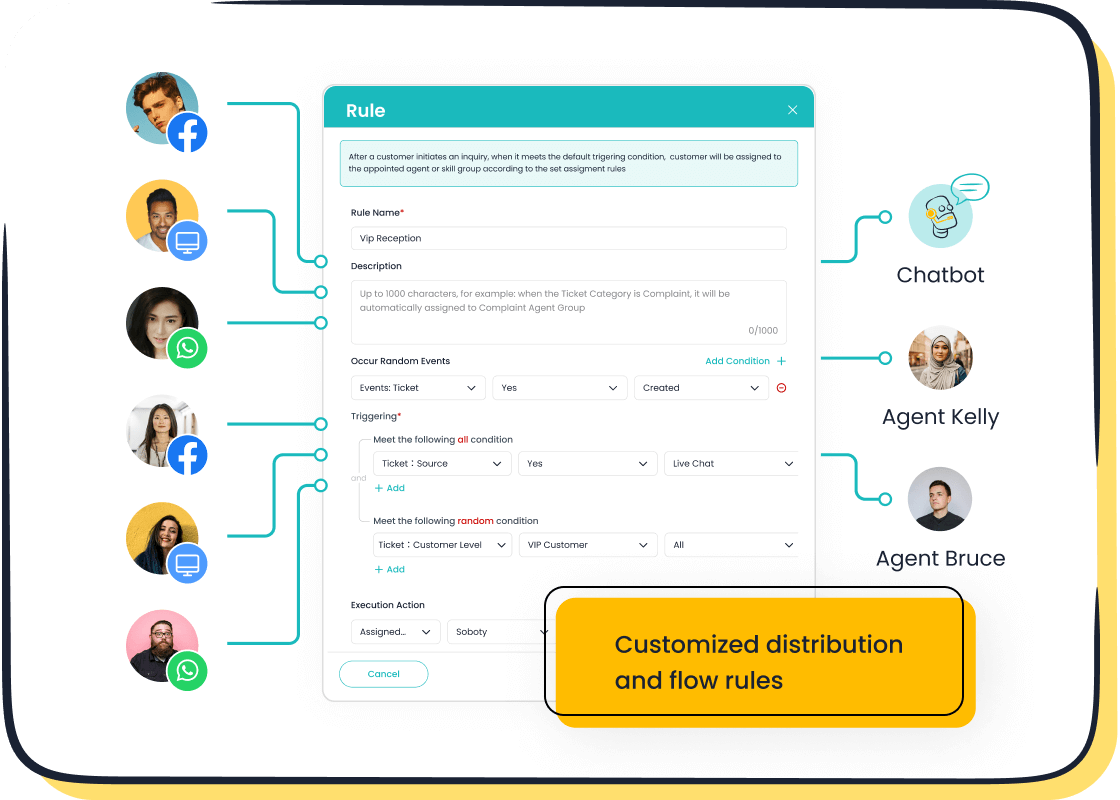
Studies show that 80% of consumers are more likely to buy from brands offering personalized experiences. On the flip side, 48% have switched to competitors due to poorly curated interactions. Using tools like Sobot Live Chat, you can gather first-party data across multiple channels, helping you create detailed customer profiles. These insights allow you to anticipate needs and provide tailored solutions, making every interaction feel unique.
Address customers by name and acknowledge their history
A simple gesture like addressing customers by name can make a big difference. It shows that you value them as individuals, not just as transactions. Acknowledging their history—like past purchases or previous inquiries—further strengthens this connection. For instance, if a customer contacts you about a delayed order, referencing their last purchase can make the conversation more personal and effective.
Here’s why this matters:
| Statistic | Source |
|---|---|
| 70% of customers say service agents’ awareness of sales interactions is fundamental to keeping their business. | Salesforce |
| 63% of consumers expect businesses to know their unique needs and expectations. | Salesforce Research |
Sobot Live Chat simplifies this process by consolidating customer data into a unified workspace. Your agents can access customer histories instantly, enabling them to provide personalized and efficient support.

Offer proactive support using Sobot's analytics features
Proactive support is the key to staying ahead of customer needs. Instead of waiting for customers to reach out, use analytics to identify potential issues and address them early. Sobot’s analytics features, like real-time dashboards and satisfaction surveys, provide valuable insights into customer behavior. These tools help you monitor activity, predict trends, and offer timely solutions.
For example, if analytics show a spike in inquiries about a specific product, you can create a detailed FAQ or chatbot response to address common concerns. This approach not only reduces response times but also improves customer satisfaction. With Sobot, you can automate repetitive tasks, freeing up your team to focus on more complex issues.
| Feature | Benefit |
|---|---|
| Real-time support | Enhances customer satisfaction through immediate assistance. |
| Automation | Reduces manual workload, allowing for quicker response times. |
| Detailed analytics | Provides insights into customer interactions, improving service quality. |
| Live Dashboard | Monitors customer activity in real-time, enabling timely support. |
By personalizing the customer journey with data and insights, you can create a seamless experience that keeps customers coming back.
Measure and Optimize Your Ecommerce Customer Service Performance
Measuring and optimizing your e commerce customer service performance is essential for delivering a seamless customer experience. By tracking key metrics, gathering feedback, and refining your strategies, you can ensure your customer service goals align with your business objectives.
Track key metrics like response time and resolution rate
Tracking customer service metrics helps you understand how well your customer support team is performing. Metrics like response time, resolution rate, and customer retention provide valuable insights into your service efficiency. For example:
| Metric | Description |
|---|---|
| Customer Satisfaction | Measures how products and services meet customer expectations. |
| Response Time | The average time taken to respond to customer inquiries. |
| First Contact Resolution | The percentage of customer issues resolved on the first interaction. |
| Customer Retention | The ability of a company to retain its customers over time. |
Quick response times can significantly improve customer satisfaction. Even if an issue isn’t resolved immediately, acknowledging the query promptly keeps customers engaged and builds trust. On the other hand, slow responses can lead to frustration and repeated inquiries, increasing your team’s workload. By focusing on these metrics, you can identify areas for improvement and enhance the overall customer experience.
Use customer satisfaction surveys to gather feedback
Customer satisfaction surveys are a powerful tool for understanding your customers’ needs and expectations. These surveys help you pinpoint the root causes of dissatisfaction, such as long wait times or unclear communication. They also allow you to segment customers into meaningful groups, making it easier to tailor your services.
For example, analyzing survey data can reveal gaps between your current performance and your desired outcomes. If customers frequently mention delays in responses, you can prioritize reducing response times. Similarly, if feedback highlights a lack of personalization, you can train your team to address customers by name and acknowledge their history. This approach not only improves customer satisfaction but also strengthens customer loyalty.
Regularly review and adjust strategies based on analytics
Analytics play a crucial role in optimizing your customer service strategy. Tools like Sobot Live Chat provide real-time dashboards and detailed reports, helping you monitor key metrics and identify trends. For instance, if you notice a drop in first contact resolution rates, you can investigate the underlying issues and implement targeted training for your team.
Proactive adjustments based on analytics ensure your strategies remain effective. Regular reviews also help you stay ahead of customer expectations, enabling you to deliver exceptional service consistently. By leveraging data-driven insights, you can refine your approach and achieve your customer service goals.
Foster a Customer-Centric Culture Across Your Business
Creating a customer-centric culture isn’t just about your customer service team—it’s about involving your entire business. When everyone prioritizes the customer, you’ll see better results, from happier customers to increased profits. Let’s explore how you can make this happen.
Make customer satisfaction a company-wide priority
Customer satisfaction should be at the heart of everything your business does. When your entire team focuses on delivering a great customer experience, the results speak for themselves. For example:
- Companies that prioritize customer experience see an 80% increase in revenue.
- Customer-centric brands are 60% more profitable than those that aren’t.
- Retaining customers costs five to 25 times less than acquiring new ones.
Encouraging every department to think about how their work impacts the customer can make a big difference. Whether it’s your marketing team crafting clear messages or your product team improving usability, every effort adds up. When you align your customer service goals with your overall business strategy, you create a seamless experience that keeps customers coming back.
Tip: Regularly share customer feedback with your entire team. It helps everyone understand what’s working and what needs improvement.
Encourage collaboration between departments
Great customer service doesn’t happen in isolation. It requires teamwork across departments. When your teams collaborate, they share knowledge, solve problems faster, and create innovative solutions. Here’s how collaboration impacts customer service:
| Evidence Description | Impact on Customer Service Outcomes |
|---|---|
| Knowledge sharing leads to better-informed decisions. | Improves customer satisfaction through smarter actions. |
| Diverse perspectives foster innovative solutions. | Resolves challenges effectively, enhancing experiences. |
| Skill development boosts efficiency. | Increases productivity and service quality. |
For example, your sales team can share insights about customer pain points with your support team. This collaboration ensures your agents are better prepared to address issues. When everyone works together, your customers benefit from a smoother, more cohesive experience.
Celebrate successes to motivate your team
Recognition goes a long way in keeping your team motivated. When you celebrate their achievements, you show them their hard work matters. Did you know 78% of employees say they’d work harder if they received more recognition? Yet, 65% say they haven’t been recognized in the past year.
Positive reinforcement creates a performance-driven culture. Celebrate small wins, like resolving a tough customer issue or hitting a new milestone. This not only boosts morale but also encourages your team to keep striving for excellence. Over time, this motivation translates into better customer service and stronger results.
Note: Recognizing your team daily can make routine tasks more engaging and improve overall performance.
By making customer satisfaction a priority, fostering collaboration, and celebrating successes, you can build a customer-centric culture that drives loyalty and growth.
Building an effective e commerce customer service strategy doesn’t have to be overwhelming. Start by understanding your customers’ needs and defining clear customer service goals. Assemble a skilled, customer-focused team and leverage tools like Sobot Live Chat to streamline operations. Personalize every interaction using data insights and continuously measure your performance to optimize the customer experience. Finally, foster a company-wide culture that prioritizes customer satisfaction. By taking these steps, you’ll not only meet but exceed customer expectations, driving loyalty and business growth. Ready to transform your customer service? Start today!
FAQ
What is the most important metric to track for customer service success?
Customer satisfaction (CSAT) is key. It measures how happy your customers are with your service. High CSAT scores mean you're meeting their expectations. Tools like Sobot Live Chat can help you gather feedback and monitor this metric effectively.
How can I reduce response times in my e-commerce business?
Use tools like Sobot Live Chat to streamline communication. Its omnichannel support and AI-powered features help your team respond faster. Automating repetitive tasks also frees up time for agents to focus on complex issues.
Why is omnichannel support important for e-commerce?
Omnichannel support ensures you’re available wherever your customers are—whether it’s WhatsApp, Instagram, or your website. This seamless experience builds trust and loyalty. Sobot’s omnichannel solution makes managing multiple channels easy and efficient.
How do I train my team to use customer service tools effectively?
Start with hands-on training sessions. Focus on key features like AI analytics and unified workspaces. Platforms like Sobot Live Chat offer user-friendly interfaces, making it easier for your team to adapt quickly.
Can automation replace human agents in customer service?
Automation complements human agents but doesn’t replace them. Chatbots handle repetitive tasks, while agents focus on complex issues. This balance improves efficiency and ensures customers still get personalized support when needed.
See Also
10 Essential Steps for Effective Omnichannel Contact Centers
10 Key Steps for Utilizing Shopify Live Chat Support
10 Helpful Tips for Selecting Social Media Support Tools
Comprehensive Guide for Choosing Omnichannel Call Center Software
Ways Ecommerce Live Chat Solutions Enhance Sales Performance